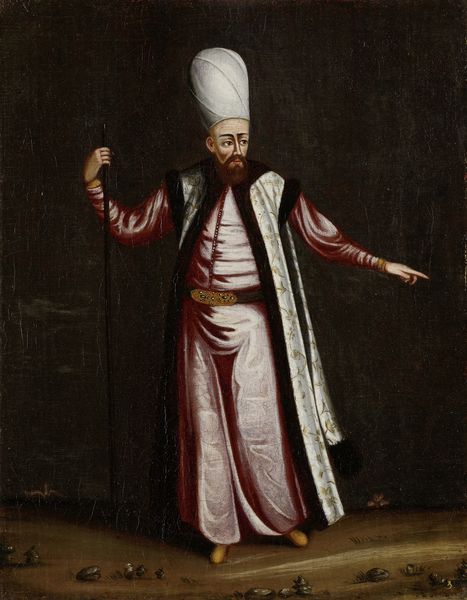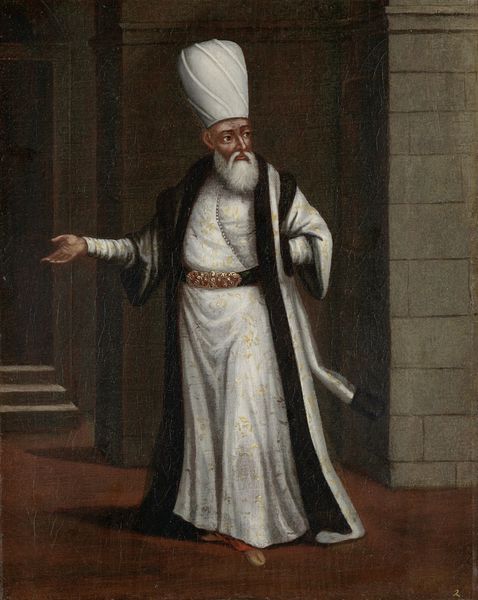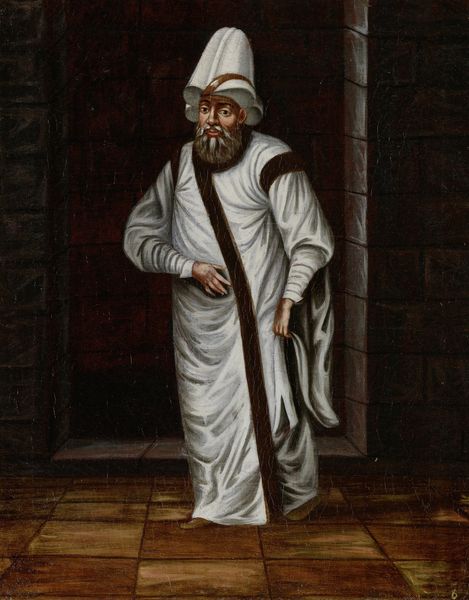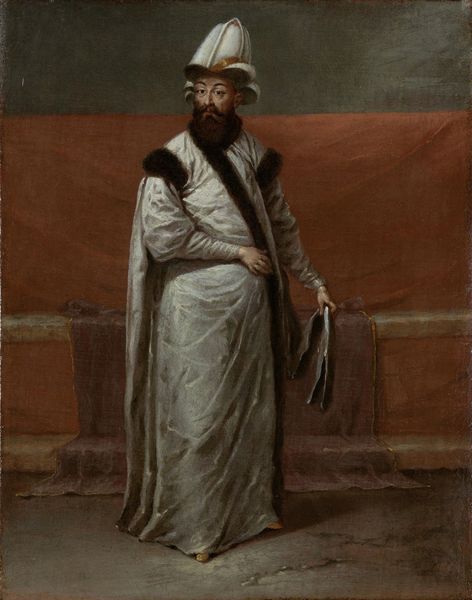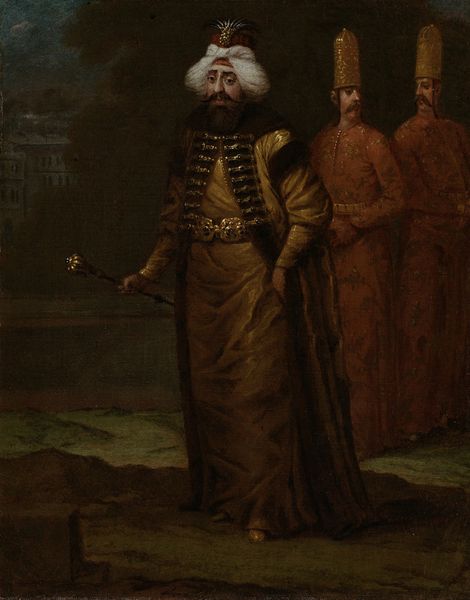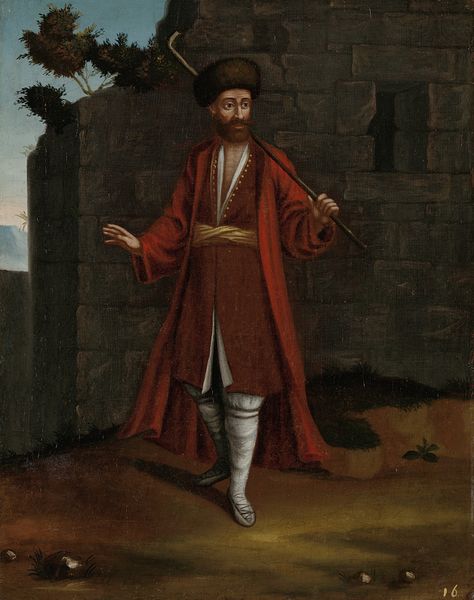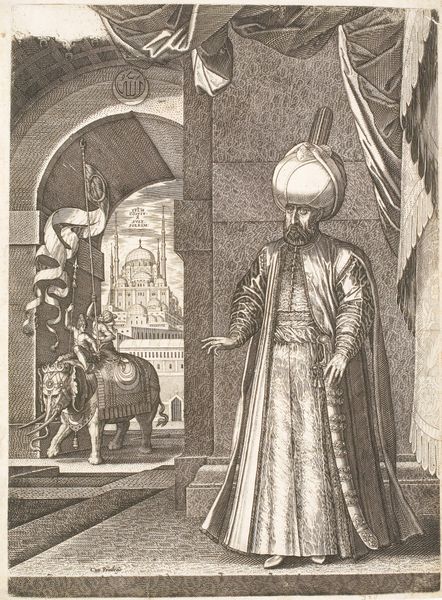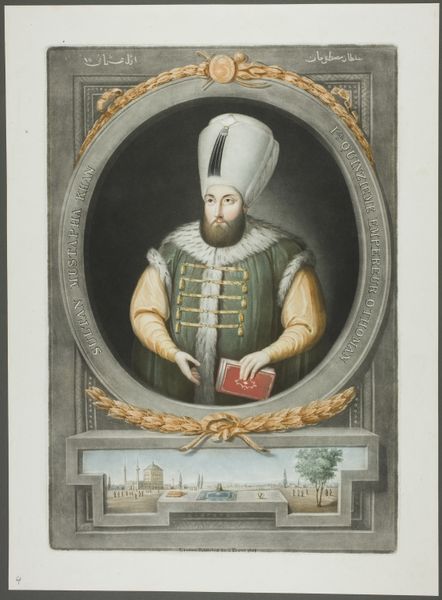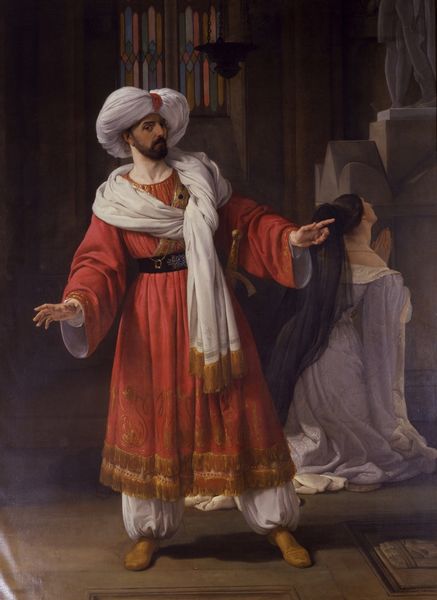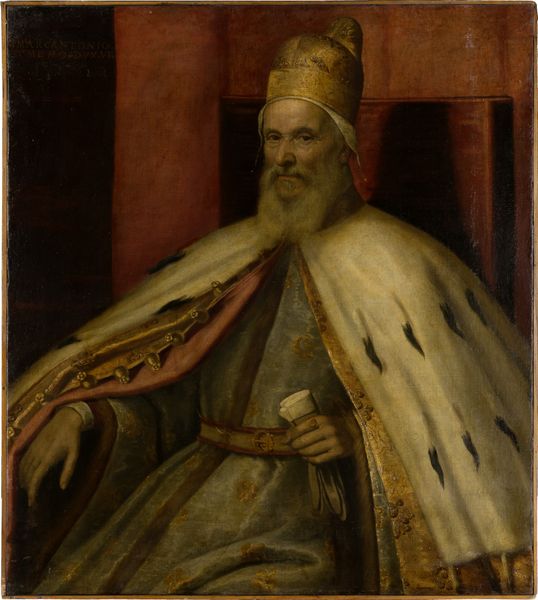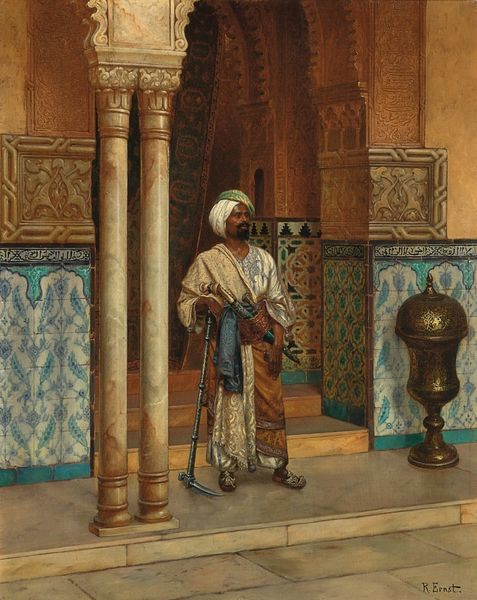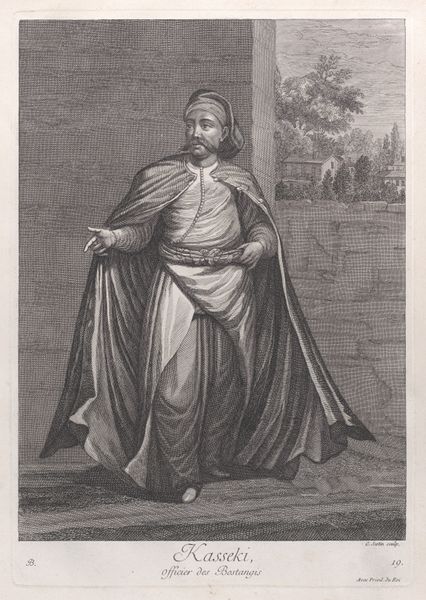
painting, oil-paint
#
portrait
#
baroque
#
painting
#
oil-paint
#
orientalism
#
genre-painting
Dimensions: height 38.5 cm, width 30.5 cm
Copyright: Rijks Museum: Open Domain
Curator: Here we have "The Chaous Bachi" by Jean Baptiste Vanmour, a painting executed sometime between 1700 and 1737. It is an oil on canvas, and what immediately grabs my eye is its rather formal, staged quality. Editor: Staged is right. It feels like a costume drama about to start. He seems to be thinking about the correct angle for the cane, it feels... posed, consciously staged to project a very specific type of power. The light catches his tall white hat in such a way, drawing your attention upwards. Curator: The hat, among other things, is culturally charged. A "Chaous Bachi" was an official, a kind of master of ceremonies or ambassadorial figure in the Ottoman court. Vanmour, as a court painter in Istanbul, captured these figures often. Editor: He certainly captured the opulence! The detailed patterns in his robes and that heavy, almost velvety curtain behind him speak volumes about status. The detail really carries the Baroque style and makes me wonder if there is a message imbedded into the clothing. Like heraldry with patterns. Curator: Absolutely! His attire is a symbolic language. The ornate robe signals rank and influence. The way he holds that slender cane; it's a visual declaration of authority and composure. Everything, down to the tight angle of the legs is composed for maximum control, while still not being relaxed or ‘leisurely’ in attitude. Editor: And the background adds to that carefully constructed image. The dark curtain versus the outdoor glimpse with the small formal pillars - suggesting an enclosure or perhaps a strategically chosen point to control his field of vision? What else is there to see. Curator: The choice of oils allows Vanmour to really explore the textural contrasts and depth to the imagery; rich fabric textures versus smooth skin, the hardness of stone versus the slight curve of his fingers - they create a real sense of tactile richness, making the figure seem more alive than other works within the school. Editor: Alive, but trapped by expectation, and even social performance? As interesting as it is historically, it seems as stiff as he feels. Thank you for providing the contextual background that helps see the world the painting inhabited, its symbols and suggestions of courtly life. Curator: My pleasure! Delving into these layered symbols enriches our understanding of not just the painting, but also of the intercultural exchange of that period.
Comments
No comments
Be the first to comment and join the conversation on the ultimate creative platform.
